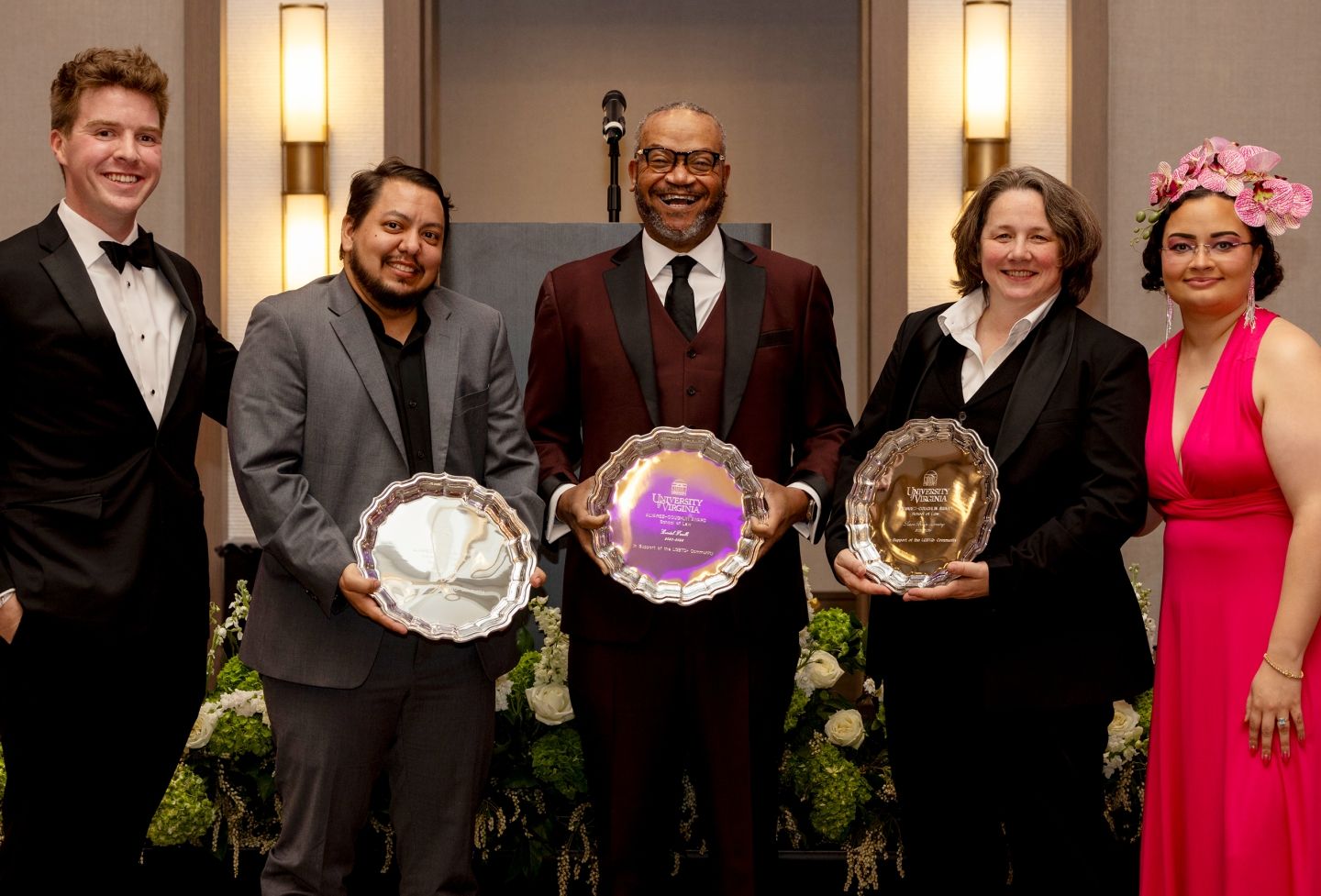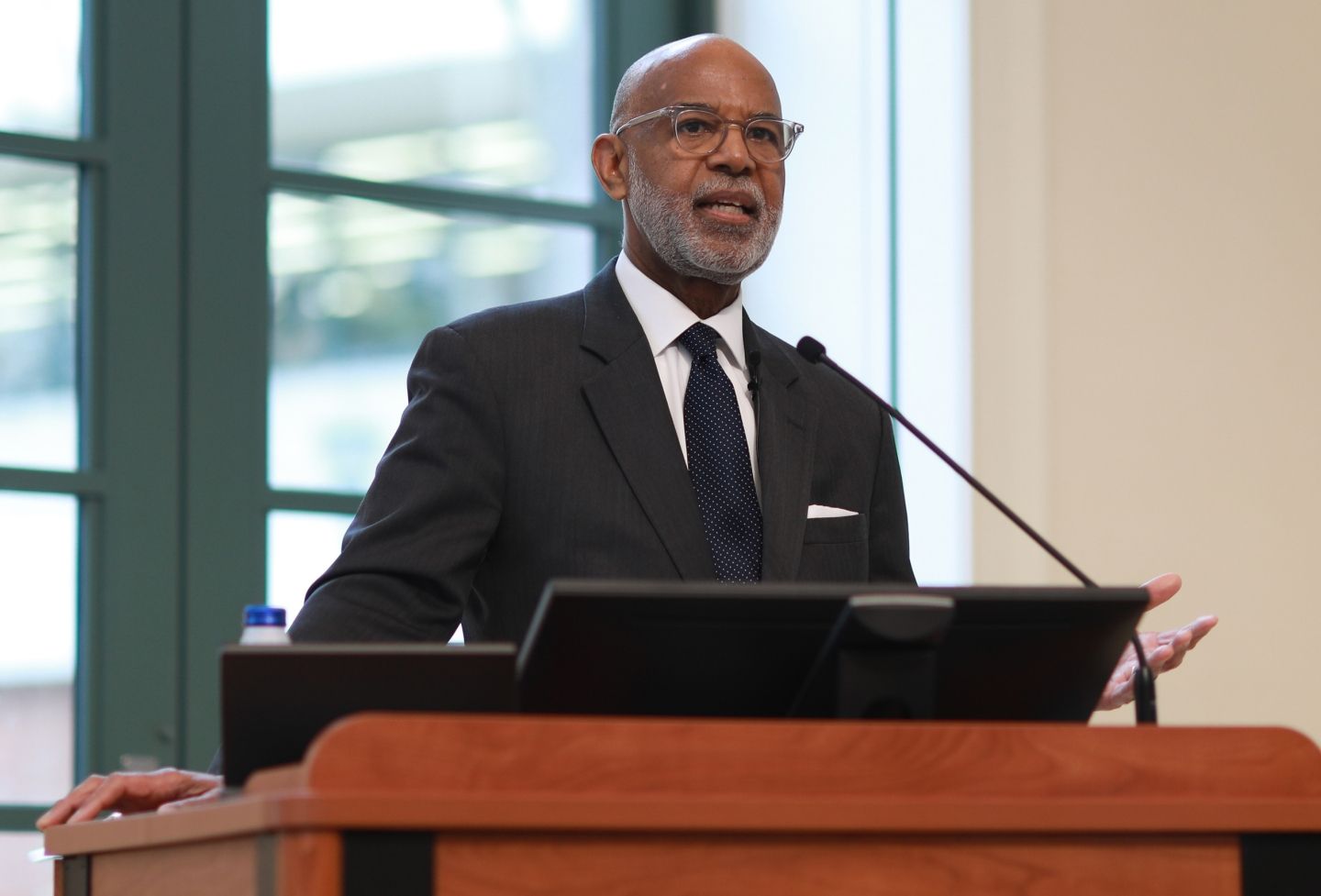They’re slim pickings in terms of food, but these critters save lives. Therein lies the meat of an alumnus’ award-winning paper.
Sami Ghubril, a 2019 graduate of the University of Virginia School of Law, has won the Law School’s annual prize for in-depth analysis of an issue relevant to animal law — the dwindling horseshoe crab population.
The Animal Law Program awarded its Bob Barker Prize in Animal Law, Ethics and Rights, which includes $2,500, to Ghubril in September. “Saving the Horseshoe Crab: The Case for the Oft-Forgotten, Critically Important Living Fossil,” was reviewed by a panel of judges with expertise in animal-related legal issues.
Ghubril’s paper looks at the important medical application derived from the prehistoric creature’s blood, the complications that this life-saving breakthrough has created for the species, and options for solving the problem.
Also recognized in the writing competition, third-year student Mary Maerz won an award for her papers “Corporate Cruelty” and “In Defense of Pro-Carceral Animal Law.” The awarding of a runner-up prize is a rare honor, according to Professor Mimi Riley, the program’s director.
Ghubril, whose paper was published in October in the Virginia Environmental Law Journal, is an associate in the Houston office of Kirkland & Ellis. He recently answered some questions about his research on the vitally important horseshoe crab.
What is the main argument of your paper?
Humans have two main uses for the horseshoe crab. First, Atlantic conch and eel fishermen use the crab as bait. Second, the biomedical industry harvests and processes the crab’s blue blood into a substance called LAL that tests vaccines and medications for lethal endotoxins. Unfortunately, these uses have set the American horseshoe crab on the road to extinction. Fishery regulators, aware of population declines, took some action that curbed bait overfishing. However, those measures are insufficient because they neglect to regulate biomedical harvest in any meaningful way. I argue for the adoption of a new synthetic substitute for the horseshoe crab’s blood, which would alleviate the remaining pressure on the crab’s population. Unfortunately, this new synthetic substitute faces significant regulatory hurdles. My paper proposes short-term remedies and long-term cures that could preserve this important species.
How does horseshoe crab blood work to detect endotoxins?
Horseshoe crabs are peculiar animals that have remained evolutionarily stagnant for hundreds of millions of years. Also known as the “living fossil,” these animals have a primitive immune system. The human blood stream deals with foreign bacteria by attacking the bacteria with antibodies released from specialized white blood cells. The horseshoe crab’s blood, conversely, consists of only one kind of blood cell that does not produce any antibodies. Instead, when the crab’s blood senses bacteria, it clots around the bacteria and expels it from the body. The blood is extremely sensitive to bacteria and their related endotoxins, capable of detecting one part per trillion, or about one drop in an Olympic-sized swimming pool. This clotting ability is what makes the horseshoe crab’s blood so valuable to humans (to the tune of $15,000 a quart). When the substance derived from the blood, LAL, is applied to contaminated medication, it instantly and visibly clots, alerting the tester that the medication must be discarded.
Are you personally opposed to this medical use?
Like many people I spoke to, I was not originally opposed to this biomedical use because I saw it as little more than a horseshoe crab blood drive. After researching the issue, I was shocked by the facts. Horseshoe crabs lose about 30% of their blood during the biomedical bleeding process. To put this figure into perspective, the average person donates 10% of their blood at a typical blood drive, and a blood loss of 30% requires an emergency blood transfusion. I now oppose biomedical bleeding and hope that the practice soon declines with the adoption of a synthetic substitute to LAL.
What are the alternatives to horseshoe LAL? Why aren’t they used?
The best-known alternative to LAL today is a synthetic substance called rFC. rFC is a superior product to LAL in almost every way: it is cheaper, more accurate, less susceptible to false positives and doesn’t involve animals. Unfortunately, significant regulatory hurdles currently prevent widespread adoption and the regulatory framework is complex. Generally speaking, the United States Pharmacopeia sets biomedical standards and the Food and Drug Administration enforces them. Both are conservative organizations, and rightfully so; nobody wants cavalier and rash health regulators. Consequently, rFC is taking years to naturally make its way through the approval process. These are years that the horseshoe crab may not ultimately have.
Why have regulations to prevent horseshoe overharvesting failed?
The primary flaw with current regulations is that they only solve half of the problem. Regulators maintain a fisheries management plan which, to their credit, has reduced bait harvest significantly. However, biomedical harvest remains largely ignored. My paper suggests that the regulatory laxness may be attributable to the importance of the crab to human health or the nonlethal intent behind the bleeding process, but regulators have not been explicit. This regulatory hole is alarming because studies show that the bleeding process results in significant lethal and sub-lethal effects on horseshoe crabs. Up to 30% of crabs die during bleeding, and the survivors are often too lethargic to engage in the energy-intensive act of breeding. Thus, although current regulations improved population numbers in some locations, other populations are stagnant or are in decline, particularly where biomedical harvest takes place. This problem may become exponentially worse in the coming years. Of the four species of horseshoe crab, three are endangered and native to Asian countries who enforce little to no regulations. In the likely event that these species become extinct within the next decade, the world’s demand for endotoxin detection tests will fall on the American horseshoe crab. Since the animal’s population will likely crumble under this pressure, finding and implementing solutions is of paramount concern.
Could you elaborate on your proposed solutions to this problem?
My paper proposes one short-term and two long-term solutions.
In the short-term, the biomedical and bait industries should take steps to replace, reduce and refine their use of the horseshoe crab. First, biomedical users can replace some LAL with rFC by transitioning to it today for all endotoxin testing except for final-batch testing. Doing so is easy and cost-effective since rFC is only not officially approved as a final batch test. Second, biomedical users and bait users can reduce their use of the horseshoe crab by adopting best practices in LAL use and transitioning to synthetic bait, respectively. Third, biomedical users can refine the way crabs are treated by demanding best practices by LAL producers.
The first long-term solution is a pre-competitive consortium. To implement this solution, regulators must first restrict biomedical harvest, thereby increasing the price of LAL even further. Next, once biomedical companies are under enough financial pressure, they will be incentivized to form a pre-competitive consortium to catalyze regulatory approval of the much cheaper rFC. This would be done by the consortium conducting its own independent studies of rFC and presenting the data to regulators for approval instead of waiting on those regulators to conduct those studies themselves. Such consortiums have been formed in the past and do not pose any antitrust concerns.
The second long-term solution is a listing of the American horseshoe crab under the Endangered Species Act. This solution would occur if crab populations decline enough for the animal to be considered endangered. If the crab were listed as endangered, the ESA would immediately forbid any harvest of the animal, and no statutory exemptions apply to any harvesters. This would be an extreme but not tragic result, for rFC exists and biomedical companies would be similarly incentivized to hasten the regulatory approval process.
Why did you choose to write about this topic?
I chose to write about this topic because it is enormously important to modern health care. Few understand how deeply the horseshoe crab affects the lives of people around the world. If you have ever received a vaccine or any intravenous medication and survived, you can thank a horseshoe crab. I was surprised how little this topic is discussed in the professional literature, so I sought to add my own voice to the conversation and propose solutions to the problems I perceived.
Has your paper made it into the hands of policymakers or other influencers yet?
I am grateful that I had the opportunity to interview persons at the United States Pharmacopeia and FDA while I wrote my paper. I intend to send the published product to those I spoke to and to other regulators who might be able to make a difference. Those who know me know that I am passionate about this subject, so I would be honored if I could play any part in saving the horseshoe crab.
Founded in 1819, the University of Virginia School of Law is the second-oldest continuously operating law school in the nation. Consistently ranked among the top law schools, Virginia is a world-renowned training ground for distinguished lawyers and public servants, instilling in them a commitment to leadership, integrity and community service.


